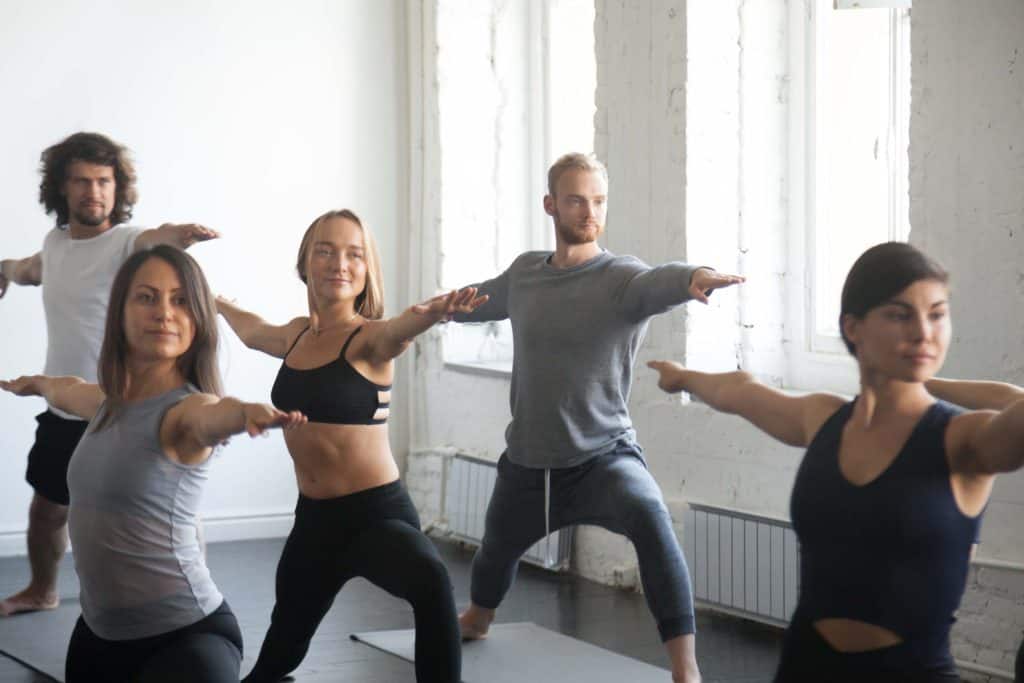Why choose ashtanga?

Forget the myth that ashtanga is hard! Our ashtanga yoga teacher Zoë Porter demystifies some of the misconceptions about ashtanga yoga. With its set sequence of rhythmic poses, this traditional form of yoga means you know exactly what your class holds in store – go with the flow of the sequence and you relax into a lovely de-stress moving meditation. Here are some of the many reasons to choose ashtanga… It’s only as hard as you make it!
- A consistent and well-rounded practice
While other yoga classes might have a specific focus each time, ashtanga follows a set series of postures which ensure you get a balanced and complete practice every time.
- Moving meditation
As the ashtanga series of poses becomes more familiar you won’t need to focus so much on external cues and instruction. Your focus instead becomes internal as you observe your breath, a gaze point and how your body feels in the pose.
- Hands-on adjustments
Your ashtanga teacher will use these in a variety of ways: to assist and correct alignment, progress or move you more deeply into a pose or just to provide support.
- A traditional and spiritual practice
Unlike other forms of yoga, ashtanga is taught in classical sequence of the same poses every time encompassing physical asanas (postures) alongside philosophy, chanting and breath work.
- Progression
Consistent practice of the ashtanga sequence with adjustments will allow to you to move deeper into existing postures but also to learn new ones that you probably would have thought impossible until you find yourself doing them!
- Suitable for everyone
For every pose there is a modification or alternative available to make it accessible to even the beginner. And for more advanced students there is always a new pose to learn or a new way to challenge yourself in an old pose.
- A complete workout
Ashtanga yoga will build strength, flexibility and balance as well as provide a cardiovascular workout. For regular practitioners there is no need to complement yoga with other types of exercise (unless you want to!).
- It’s only as tough as you make it
The same sequence and same class can feel different for everyone practising! Ashtanga can be practised in a soft and gentle way or you can really go for it and build up a sweat. The choice is completely in your approach and state of mind.
- Stress relief
Breathing through postures you may find tricky or challenging will help you do the same in the rest of your life.
- Emotional well-being
Practising ashtanga brings about a more calm and equanimous state of mind
- Therapeutic
The Ashtanga primary series is called Yoga Chikitsa in Sanskrit, translated as Yoga Therapy. This series of poses is intended to cleanse and purify the internal organs, as well as building fitness, allowing for the healing of a diseased body or maintaining balance of a healthy one.
